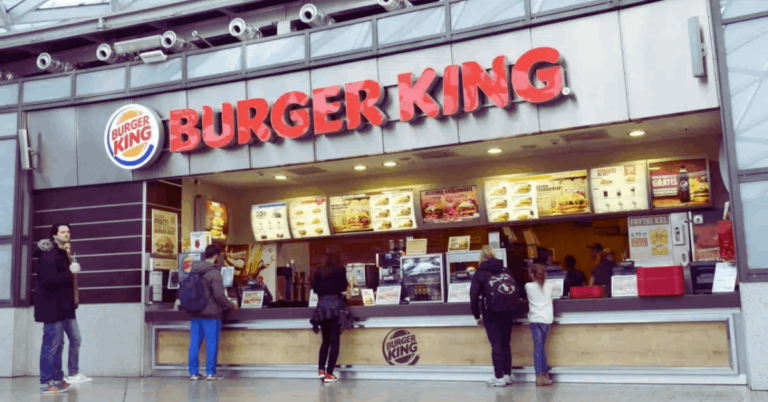Transportation safety standards careers play a pivotal role in safeguarding the well-being of millions daily. This article highlights what you need to embark on this impactful journey.
We’ve covered you, from essential qualifications to navigating the job market. It’s your guide to making an informed decision about joining the forefront of transportation safety.
Understanding Transportation Safety Standards
Transportation safety standards are rules and regulations designed to ensure public safety and the safety of goods in transit. They minimize accidents, injuries, and fatalities by setting strict guidelines for industry practices.
These standards are developed through extensive research and analysis of transportation risks. Their ultimate goal is to create a safer, more reliable transportation system for everyone.
Key Organizations
Several global and local bodies are responsible for setting and enforcing transportation safety standards. Organizations like the International Transport Forum (ITF) and the International Civil Aviation Organization (ICAO) play crucial roles internationally.
Locally, government agencies such as the Department of Transportation (DOT) in the United States ensure compliance. These bodies work together to maintain and improve safety across all modes of transport.
Career Paths in Transportation Safety Standards
Entering the field of transportation safety standards means committing to public safety and regulatory compliance. It offers diverse roles with significant impact.
- Inspectors: Ensure compliance with safety regulations. Required: keen observation skills and knowledge of safety standards.
- Engineers: Design safety features for transportation systems. Required: engineering degree, problem-solving skills.
- Compliance Officers: Monitor adherence to laws and regulations. Required: attention to detail, legal and regulatory knowledge.
Each role demands specific skills and qualifications, focusing on safety, technical expertise, and regulatory knowledge.
The Importance of Education and Certification
A solid educational foundation is crucial for a career in this field, equipping you with the necessary knowledge and skills.
Educational Background
Careers in transportation safety standards often require a bachelor’s degree in engineering, safety management, or a related field. Specific courses in transportation safety, accident investigation, and risk management are highly beneficial.
These programs provide the technical and analytical skills essential for the job. Further education can lead to specialized roles and increased responsibility.
Certification Importance
Professional certifications enhance your credentials and demonstrate your expertise to employers. Certifications such as the Certified Safety Professional (CSP) or Certified Transportation Safety Professional (CTSP) are valuable.
Obtaining these requires passing exams and meeting experience criteria. They signify a commitment to the highest safety standards and continuous professional development.
Essential Skills and Attributes for Success
Mastering core skills and attributes is essential to excel in transportation safety standards careers.
Critical Skills
Success in this field hinges on analytical thinking, which allows for evaluating complex scenarios and identifying safety risks. Attention to detail is non-negotiable, as minor oversights can lead to significant safety hazards.
Practical communication skills are crucial for clearly articulating safety procedures and regulations to various stakeholders. These competencies enable professionals to effectively develop, implement, and enforce safety standards.
Learning and Adaptability
The transportation industry is ever-evolving, making continuous learning a key to staying ahead in safety standards. Adaptability is vital as new technologies and regulations emerge. Professionals must be proactive in updating their knowledge and skills. This commitment to growth ensures the highest safety standards are met and exceeded.
Navigating the Job Market
Finding the correct position in transportation safety requires strategy and insight.
Job Opportunities
The job market for transportation safety is diverse, with opportunities in both public and private sectors. Start by researching organizations and agencies that align with your interests and skills.
Online job boards, company websites, and professional associations are valuable resources. Networking is crucial in uncovering job openings and gaining insights into the industry.
Don’t overlook internships and volunteer positions, as they can open doors to full-time roles. Tailoring your resume and cover letter for each application is critical.
Networking Tips
Effective networking is crucial for advancing in transportation safety standards careers. It connects you with opportunities, insights, and mentors in the industry.
- Engage with professional associations and attend industry events to connect with peers and leaders.
- Utilize social media platforms like LinkedIn to showcase your expertise and connect with industry professionals.
- Seek mentorship or guidance from experienced professionals in the field.
Building a strong professional network can significantly enhance your visibility and opportunities in the job market.
Challenges and Rewards
Pursuing a career in transportation safety standards is both challenging and rewarding.
Common Challenges
Professionals often face regulatory complexities and must stay abreast of constant changes in standards and laws. The responsibility of ensuring public safety can be pressurizing, requiring precise judgment and decision-making. Overcoming these challenges demands resilience and a deep commitment to the field.
Rewards
The greatest reward is the impact on public safety and well-being, knowing your work directly saves lives and prevents accidents. There’s also a sense of achievement in improving transportation efficiency and reliability.
These roles offer personal growth, professional satisfaction, and the opportunity to make a significant societal difference.
Embracing New Technologies
The transportation industry is rapidly evolving with technological advancements. Staying informed about new technologies and innovations is crucial.
This includes understanding the impact of autonomous vehicles, smart infrastructure, and data analytics on safety standards. Professionals must be agile and ready to integrate these technologies to enhance safety and efficiency.
Innovation in Safety Practices
Innovation isn’t just about technology; it’s also about thinking creatively to solve safety challenges. This means developing new methodologies for risk assessment, accident prevention, and emergency response. By fostering a culture of innovation, you contribute to setting higher safety standards and practices.
Understanding Compliance
Compliance with local and international safety regulations is foundational. Professionals must have a thorough understanding of the legal framework governing transportation safety. This includes staying updated on legislation changes and ensuring that safety protocols meet or exceed regulatory requirements.
Ethical Considerations
Ethics play a significant role in transportation safety. Decisions must prioritize public safety and welfare, balancing technological and operational advancements with ethical implications. This includes considerations around privacy, data protection, and the equitable implementation of safety measures.
Final Reflections on Transportation Safety Standards Careers
Embarking on transportation safety standards careers requires a blend of education, skills, and a deep commitment to public welfare. The field offers diverse roles, from engineering to compliance, each with its challenges and rewards.
Staying ahead involves continuous learning and adapting to new technologies and regulations. Ultimately, these careers provide a unique opportunity to impact public safety and transportation efficiency significantly.
Read in another language
- Español: Normas de seguridad en el transporte: Lo que necesitas saber antes de comenzar tu carrera
- Bahasa Indonesia: Standar Keselamatan Transportasi Karir: Apa yang Perlu Anda Ketahui Sebelum Memulai
- Bahasa Melayu: Standard Keselamatan Pengangkutan: Apa Yang Perlu Anda Ketahui Sebelum Memulakan Kerjaya
- Čeština: Normy pro bezpečnost dopravy: Co potřebujete vědět před zahájením kariéry
- Dansk: Transportation Safety Standards Careers: What You Need to Know Before You Start
- Deutsch: Karrieren im Bereich der Transportsicherheitsstandards: Was Sie wissen müssen, bevor Sie beginnen
- Eesti: Transpordi ohutusstandardid karjäär: Mida pead teadma enne alustamist
- Français: Normes de sécurité des transports: Ce que vous devez savoir avant de commencer une carrière
- Hrvatski: Standardi sigurnosti prijevoza karijere: Što trebate znati prije nego što počnete
- Italiano: Norme di sicurezza dei trasporti: cosa devi sapere prima di iniziare la carriera
- Latviešu: Transportsikuma drošības standarti: Ko jāzina, pirms sākat karjeru
- Lietuvių: Transportacijos saugos standartų karjera: Ką reikia žinoti prieš pradėdami
- Magyar: Közlekedésbiztonsági szabványok karrier: Amit tudnod kell, mielőtt elkezded
- Nederlands: Transport Safety Standards Careers: Wat u moet weten voordat u begint
- Norsk: Transport sikkerhetsstandarder karriere: Hva du trenger å vite før du begynner
- Polski: Standardy Bezpieczeństwa Transportu: Co Warto Wiedzieć Przed Rozpoczęciem Kariery
- Português: Normas de Segurança no Transporte: Carreiras – O Que Precisa Saber Antes de Começar
- Română: Standardele de Siguranță în Transporturi: Ce Trebuie să Știi Înainte să Începi o Carieră
- Slovenčina: Normy bezpečnosti v doprave: Čo musíte vedieť pred začiatkom kariéry
- Suomi: Liikenteen turvallisuusstandardien uramahdollisuudet: Mitä sinun tulee tietää ennen kuin aloitat
- Svenska: Karriär inom transportssäkerhetsstandarder: Vad du behöver veta innan du börjar
- Tiếng Việt: Tiêu chuẩn an toàn vận tải: Những điều bạn cần biết trước khi bắt đầu
- Türkçe: Ulaşım Güvenliği Standartları İş Fırsatları: Başlamadan Önce Bilmeniz Gerekenler
- Ελληνικά: Πρότυπα Ασφάλειας Μεταφορών: Τι Πρέπει να Γνωρίζετε Πριν Αρχίσετε
- български: Стандарти за безопасност в транспорта Кариери: Какво трябва да знаете преди да започнете
- Русский: Карьера в стандартах безопасности транспорта: что вам нужно знать, прежде чем начать
- српски језик: Каријера у стандардима безбедности у транспорту: Шта треба да знате пре него што почнете
- עברית: תקני בטיחות בתחבורה: מה שחשוב לדעת לפני שמתחילים
- اردو: سلامتی کی مواصلات کی معیاری نوکریاں: آپ کو شروع ہونے سے پہلے کیا کرنا ہوگا
- العربية: المعايير الخاصة بسلامة وسائل النقل: ما تحتاج معرفته قبل أن تبدأ
- فارسی: استانداردهای ایمنی حمل و نقل: آنچه قبل از شروع شغل بایستید بدانید
- हिन्दी: सुरक्षा मानक परिवहन करियर: जिसे आपको शुरू करने से पहले जानने की आवश्यकता है
- ภาษาไทย: มาตรฐานความปลอดภัยในการขนส่ง: สิ่งที่คุณต้องรู้ก่อนที่คุณจะเริ่มต้น
- 日本語: 輸送安全基準のキャリア:始める前に知っておくべきこと
- 简体中文: 交通安全标准职业:在开始之前您需要了解的内容
- 繁體中文: 運輸安全標準職業:開始之前需要了解的事項
- 한국어: 교통 안전 기준 직업: 시작하기 전에 알아야 할 사항











